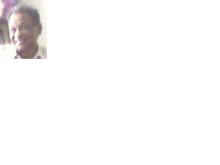
JOHN THE PAINTER
the first modern terrorist
by Jessica Warner
Historian Simon Schama was more enthusiastic about his carefully researched work, describing it as a 'rich, ambitious history, executed in literary fire works : a small glory and a joy to read'.
This book's anti hero trained as a house painter but could not find work, so he tramped the country looking for work , his jobs became house breaking and pick pocketing. After a two years of spell in America, he became an impassioned supporter of the American Revolution.
His first act of terror , on returning to England in 1776 , was to try to burn down Portsmouth Dockyard . Unlucky for him , only the rope house was destroyed. Next, he set some fires in Bristol. The country was terrified and the news papers carried full of scare stories. Was he acting alone or part of a gang? Who were his American Masters? At the height of the scare , King George III was being briefed daily, and offered a huge reward for the miscreant;s capture.
The Bow street runners were sent in pursuit. Would the terrorist be caught or would the Royal dockyards be destroyed and the British war effort in America come to a grinding halt?
the first modern terrorist
by Jessica Warner
Historian Simon Schama was more enthusiastic about his carefully researched work, describing it as a 'rich, ambitious history, executed in literary fire works : a small glory and a joy to read'.
This book's anti hero trained as a house painter but could not find work, so he tramped the country looking for work , his jobs became house breaking and pick pocketing. After a two years of spell in America, he became an impassioned supporter of the American Revolution.
His first act of terror , on returning to England in 1776 , was to try to burn down Portsmouth Dockyard . Unlucky for him , only the rope house was destroyed. Next, he set some fires in Bristol. The country was terrified and the news papers carried full of scare stories. Was he acting alone or part of a gang? Who were his American Masters? At the height of the scare , King George III was being briefed daily, and offered a huge reward for the miscreant;s capture.
The Bow street runners were sent in pursuit. Would the terrorist be caught or would the Royal dockyards be destroyed and the British war effort in America come to a grinding halt?









